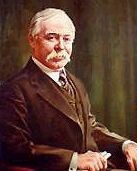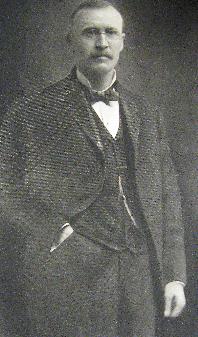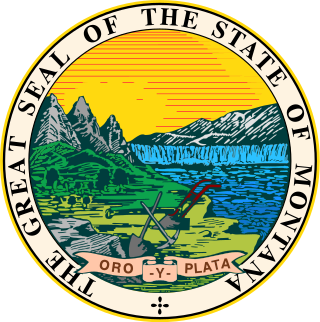
Bonner-West Riverside is a census-designated place (CDP) in Missoula County, Montana, United States, including the unincorporated communities of Bonner, Milltown, West Riverside, and Pinegrove. It is part of the Missoula, Montana Metropolitan Statistical Area. The population was 1,663 at the 2010 census, a decline from its population of 1,693 in 2000.

Deer Lodge is a city in and the county seat of Powell County, Montana, United States. The population was 2,938 at the 2020 census.

Marcus Daly was an Irish-born American businessman known as one of the four "Copper Kings" of Butte, Montana, United States.

Butte is a consolidated city-county and the county seat of Silver Bow County, Montana, United States. In 1977, the city and county governments consolidated to form the sole entity of Butte-Silver Bow. The city covers 718 square miles (1,860 km2), and, according to the 2020 census, has a population of 34,494, making it Montana's fifth-largest city. It is served by Bert Mooney Airport with airport code BTM.
The Billings Gazette is a daily newspaper based in Billings, Montana, that primarily covers issues in southeast Montana and parts of northern Wyoming. Historically it has been known as the largest newspaper in Montana and is geographically one of the most widely distributed newspapers in the nation.
The Montana Standard is a daily newspaper in Butte, Montana owned by Lee Enterprises.
The Independent Record is a daily newspaper printed and distributed in Helena, Montana. The newspaper is owned by Lee Enterprises.

Hennessy's was an American department store, founded by Daniel Hennessy of Butte, Montana in 1898. Stores opened throughout Montana. In the 1970s, the company was acquired by Mercantile Stores and the headquarters moved to Billings, Montana. When Mercantile Stores was acquired by Dillard's in 1998, the 100-year-old name was retired in favor for Dillard's.

Joseph Moore Dixon was an American Republican politician from Montana. He served as a Representative, Senator, and the seventh Governor of Montana. A businessman and a modernizer of Quaker heritage, Dixon was a leader of the Progressive Movement in Montana and nationally. He was the nation chairman for Theodore Roosevelt running for the presidency as the candidate of the Progressive Party in 1912.

NBC Montana is a regional network of three television stations in western Montana, United States, affiliated with NBC and owned by Sinclair Broadcast Group. It is headquartered in Missoula, and serves as the NBC affiliate for the Missoula and Butte markets.
The Anaconda Copper Mining Company, known as the Amalgamated Copper Company from 1899 to 1915, was an American mining company headquartered in Butte, Montana. It was one of the largest trusts of the early 20th century and one of the largest mining companies in the world for much of the 20th century.
The Missoula Independent was a free weekly alternative newspaper in Missoula, Montana, United States. It was acquired by Lee Enterprises, owner of the daily Missoulian, in 2017. On September 11, 2018, Lee Enterprises shut down the Independent without notice.

John Dennis Ryan was an American industrialist and copper mining magnate. He served as President of the Anaconda Copper Mining Company and was a founder of the Montana Power Company.

John Ryan Toole was an industrialist and legislator in Montana. He served in the Montana State Legislature in 1890.
Since its incorporation in 1885, Missoula, Montana has been one of the primary media markets in the state of Montana, beginning with the weekly newspaper the Missoula and Cedar Creek Pioneer. The Missoula single-broadcast over-air television media market has been the largest in Montana since 2002. Though Billings is the largest city in Montana, Missoula's single-broadcast over-air television media market includes Missoula, Ravalli, Granite, Mineral, Lake, Flathead, and Sanders and serves over 113,000 television homes (2011). Missoula is also home to the state's third largest daily newspaper, the Missoulian, and the state's largest alternative weekly, the Missoula Independent.
The Boston and Montana Consolidated Copper and Silver Mining Company was a mining, smelting, and refining company which operated primarily in the state of Montana in the United States. It was established in 1887 and merged with the Amalgamated Copper Company in 1901. The Amalgamated Copper Company changed its name to Anaconda Copper in 1910, and became one of America's largest corporations. Historian Michael P. Malone has written, "Well financed and well managed, the Boston and Montana came to rank among the world's greatest copper companies."
The Anaconda Standard was a newspaper published in Anaconda, Montana. The first issue was published on September 4, 1889 and the final issue was published on June 20, 1970.
Martha Edgerton Rolfe Plassmann was a feminist and socialist from Montana, US.

The 1912 Montana gubernatorial election was held on November 5, 1912.











